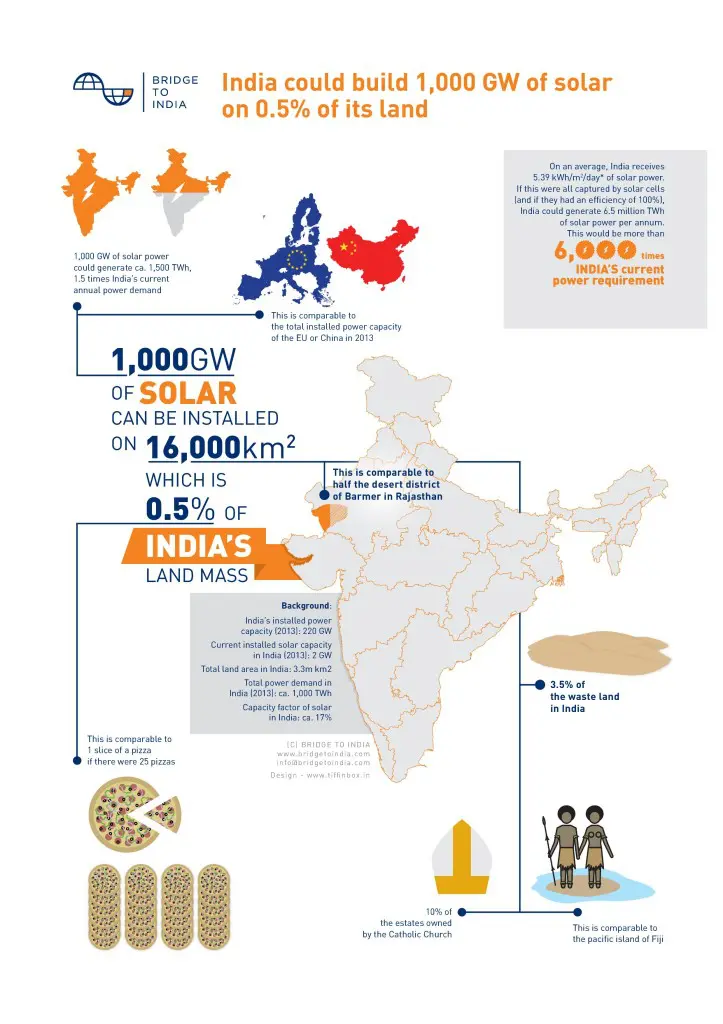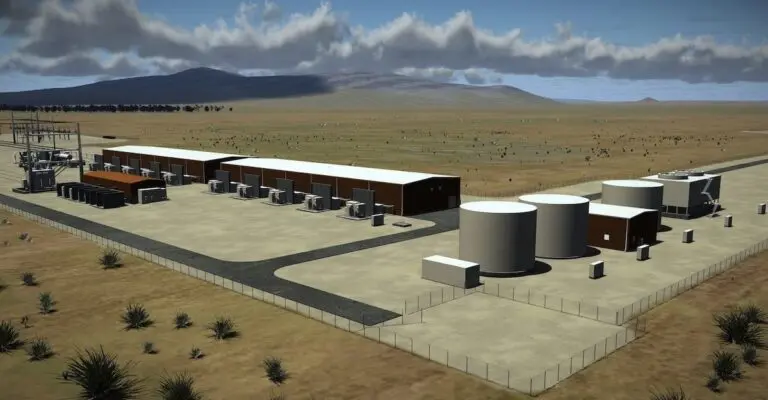 We have often argued that solar can be India’s future: not just an incremental power source at the fringes of the economy, but a real game changer. We wanted to visualize what the potential really is. Our India Solar Potential map on the right, is the result. Click on map to enlarge.
We have often argued that solar can be India’s future: not just an incremental power source at the fringes of the economy, but a real game changer. We wanted to visualize what the potential really is. Our India Solar Potential map on the right, is the result. Click on map to enlarge.
- 1,000 GW of solar could be built on half the area of the district of Barmer in Rajasthan
- 1,000 GW could generate 1,500 TWh/ year which is around 1.5 times India’s demand
- The map given below shows how India can think big with solar
1,000 GW of solar PV (multi-crystalline modules) would require 16,000 km2. That is a large amount of land, but not nearly too large for India to contemplate. It would cover half the desert district of Barmer in Rajasthan or 3.5% of India’s wasteland (or, about the size of the pacific island of Fiji or 10% of the land holdings of the Catholic Church).
1,000 GW of solar could generate 1,500 TWh per year, around 1.5 times India’s 2013 demand. We assume a capacity utilization factor (CUF) of 17%. At the moment, India uses 220 GW of installed capacity (the majority of which are coal-fired power plants) to generate around 1,000 TWh of power per year. The average CUF of the current plant mix is higher than that of solar. Thus, we would need more installed solar capacity to generate the same amount of power.
If we turn the story around and look at the solar energy that hits India as a whole, the picture becomes clearer still: the country receives an average of 5.39 kWh of solar energy per square meter per day. This is around 6.5 million TWh per year for the entire land-mass of India, more than 6,000 times the 2013 power demand.
The map is designed to show that India can think big with solar. It would in reality not be advisable to place only one enormous power plant into a single district. More likely, there would be many different sized plants across the country: from the Western deserts to the Deccan plateau and the power starved plains of Tamil Nadu, in thousands of villages and on millions of rooftops. There will be challenges in making this work. The main challenge is that solar power cannot be generated all the time and in an entirely predictable manner. So, if solar were to provide 100% of India’s power requirements, there would have to be storage, which is currently still very expensive. In the absence of storage, large amounts of solar would have to be complemented by spinning reserves and balancing power plants. We are currently working on quantifying the technical challenges and commercial implications of this in more detail. The potential, however, remains huge. And the implementation is possible.






